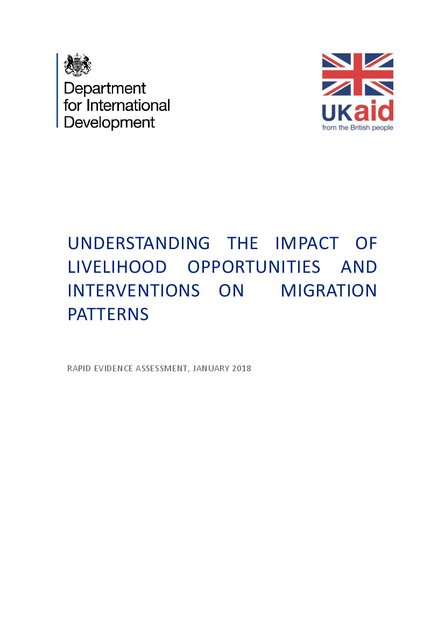
While the interlinkages between migration and development have been studied for decades, the field has thus far lacked a robust evidence base to examine how and under what conditions livelihood interventions and livelihood opportunities impact migration. This Rapid Evidence Assessment aims to fill part of this gap by examining the best available evidence from 121 quantitative and qualitative studies conducted in low - and low middle-income countries in the past 15 years. It analyses the findings from these studies through the prism of 2 core research questions:
- What effect does the availability of sustainable livelihood opportunities have on international migration from low-income or low middle-income countries, both within the region and to higher-income regions? Do these effects differ according to the type of work available (e.g. formal or informal, self- versus wage-employment, high or low quality jobs), and socio-demographic factors?
- To what extent are livelihood interventions in origin, transit, or first asylum countries likely to have an identifiable impact on migration decisions among targeted groups and communities? What is the likely effect of different types of livelihood interventions applied?
The evidence points to several emerging findings on the effect of livelihood opportunities on migration patterns:
- greater livelihood assets may facilitate more actual migration in certain contexts
- educational attainment may increase migration and migration aspirations, though enrolment in school could decrease migration in the short term
- a perceived lack of employment or livelihood opportunities may contribute to migration aspirations
*a desire for higher salary or better career prospects can be a driver of migration aspirations, particularly for the high-skilled